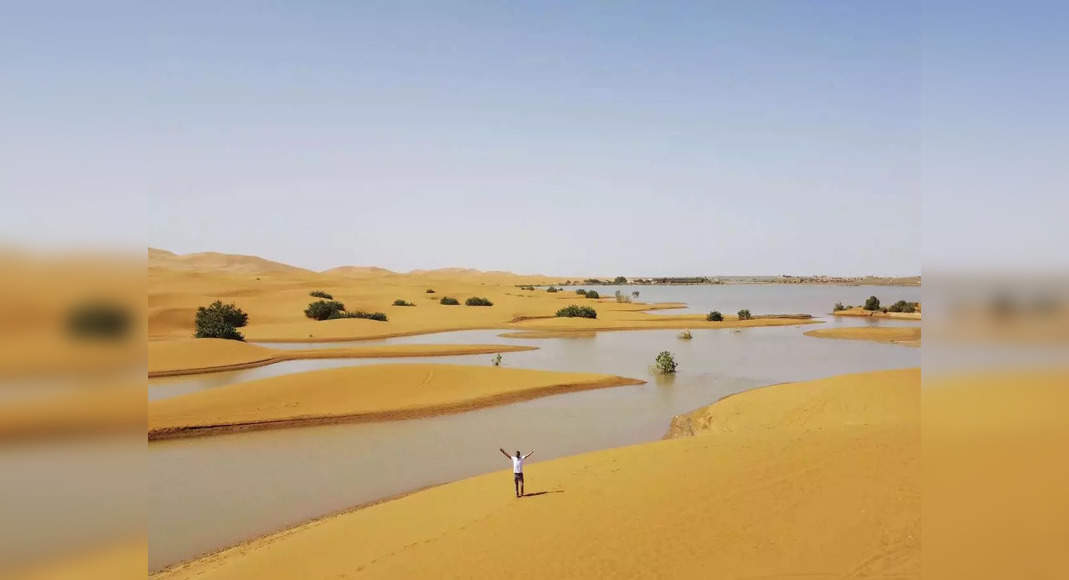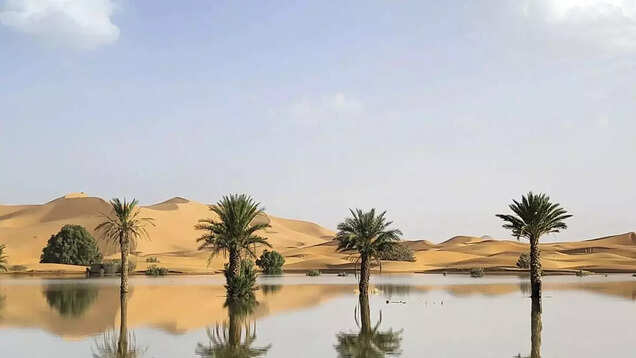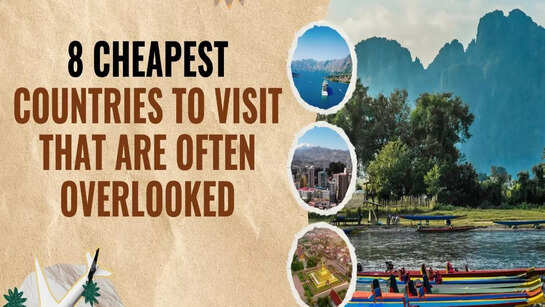Travel
Rare rainfall transforms Sahara Desert, creating blue lagoons amid the sand dunes

The Sahara Desert has turned into a blue lagoon! It might sound unbelievable, but after a rarest of rare deluge of rainfall, the arid landscape of the Sahara Desert has transformed, creating blue lagoons amid the palm trees and sand dunes of southeastern Morocco.
Reports add that this unexpected weather phenomenon has provided much-needed relief to some of the most drought-stricken regions, and delivered more water than many communities have seen in decades.
Read more: Most beautiful train journeys in India for every train lover
Southeastern Morocco is known for its extreme aridity and typically sees little to no rainfall at all during the late summer months. However, recent weather patterns have not only brought relief, but has also brought significant change. According to Houssine Youabeb, a meteorologist with Morocco’s General Directorate of Meteorology.“It’s been 30 to 50 years since we’ve had this much rain in such a short space of time.” The extratropical storm responsible for the phenomena is thought to have the potential to change the climate of the area in the coming months and years by retaining more moisture, which would result in more frequent storms.Read more: October is all about lovely weather in these offbeat destinations
Morocco has witnessed a severe drought for the past six years, the reason why the country has been facing enormous challenges in terms of water supply and agriculture. Due to this situation, many farmers have opted to keep their farms fallow, as they could no longer struggle to grow their crops. Not only this, people are suffering in both rural and urban areas due to the restrictions on water use, which has made matters worse for the people living there.
However, a lot of recent rain is expected to have a significant role in recharging groundwater aquifers, which are vital water sources for those residing in arid areas. According to reports, the region’s dammed reservoirs have been experiencing record rates of refilling since the rains began in September.

However, although the downpour has brought hope, every news isn’t a good news either. The rain has not arrived without a price. According to reports, the unexpected surge of water in the area caused flash floods that destroyed certain agricultural areas’ harvests and left over 20 people dead in Morocco and Algeria. Meanwhile, the Moroccan Government has allocated money for emergency relief to help those in need, including areas that were also impacted by the earthquake that occurred last year.
Amazingly, photographs taken by NASA satellites show water rushing into Lake Iriqui, a historically dry lakebed between Tata and Zagora that has been barren for fifty years. The long-term effects of this exceptional weather event are still unknown as the region works to recover from the recent flood, but there is optimism for a more sustainable future in the Sahara.










